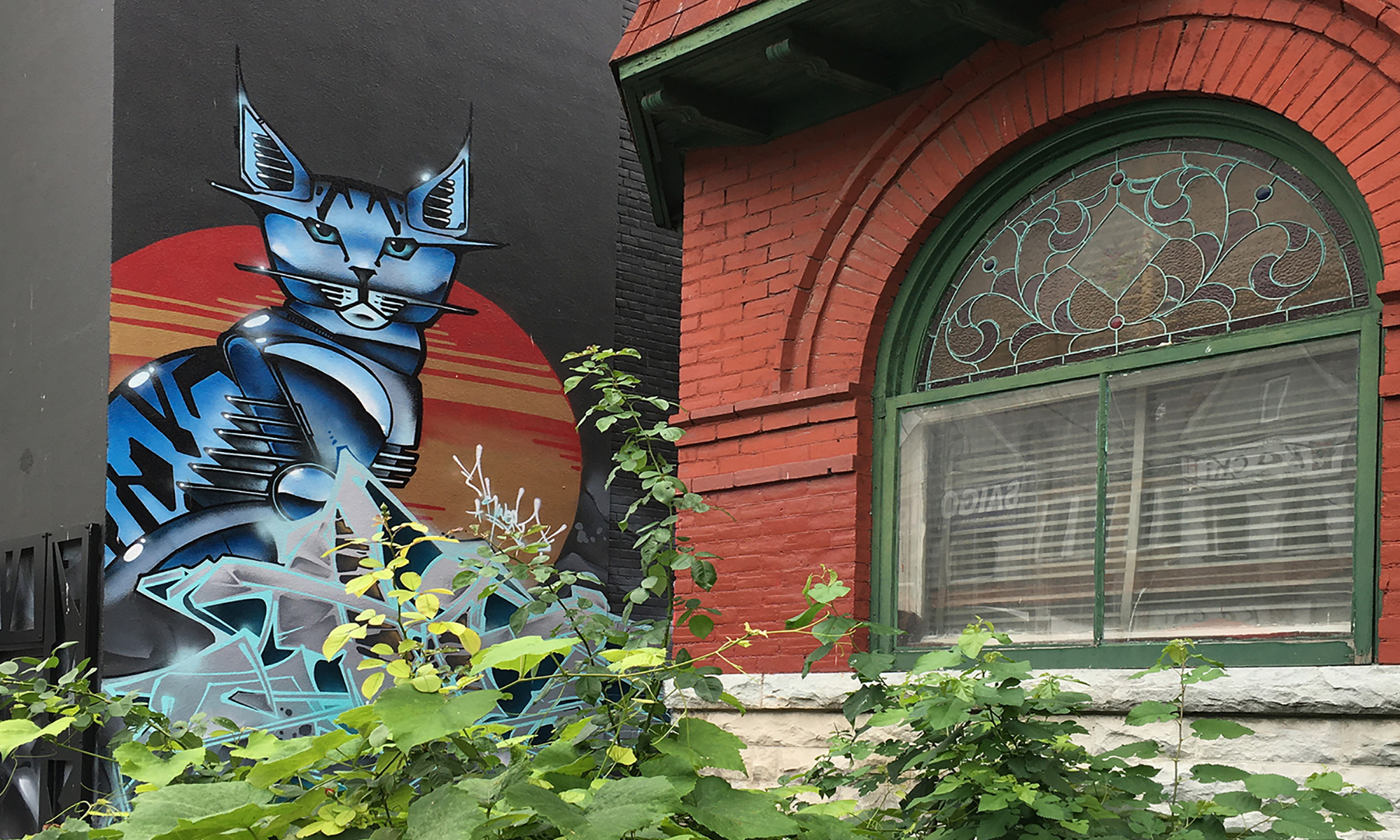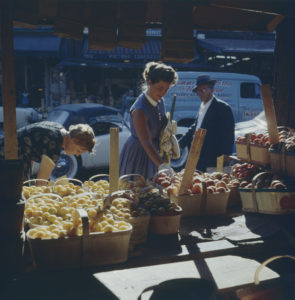In the 1950s and 1960s, Kensington Market became the social and cultural hub for Portuguese, Brazilian, and Hungarian immigrants and Afro-Canadians.[1] During this period, a third wave of Jewish immigrants fled the Hungarian Revolution and settled in Kensington Market.[2] For Portuguese immigrants, Kensington Market allowed the community to become a self-sufficient ethnic group with a neighbourhood.[3] Kensington Market had restaurants, bookstores, radio broadcasters and newspapers, a Portuguese bank, real estate brokers, immigration consultants, interpreters, and income tax specialists.[4] A drawback of the Portuguese community’s self-sufficiency was that their Canadian societal integration lessened, limiting the opportunities for Portuguese immigrants and their children.[5] In the 1970s, substantial numbers of Portuguese immigrants or their children left Kensington Market and moved to adjacent neighbourhoods or the suburbs to seek social mobility through higher standards of living and better educational and employment opportunities in the Greater Toronto Area. Despite changes, the Portuguese who have lived and worked in Kensington Market shaped its vibrant character.

